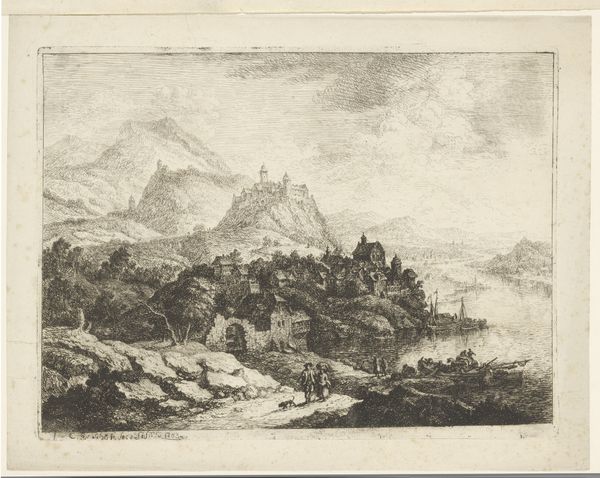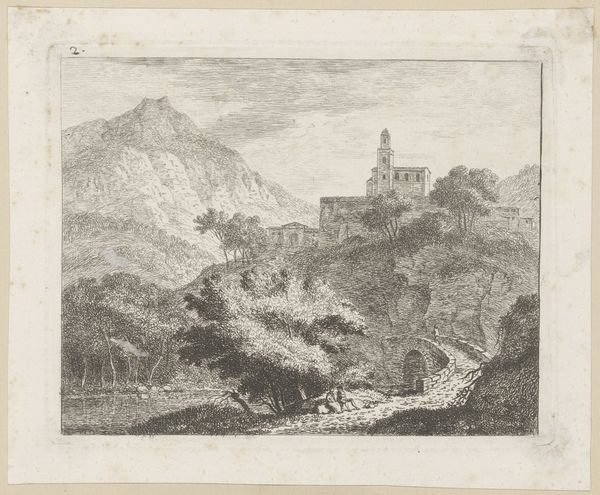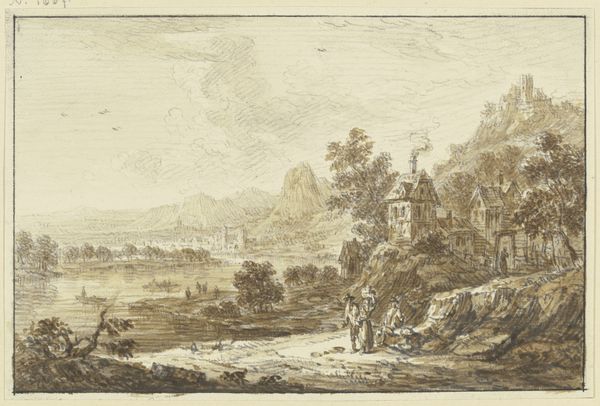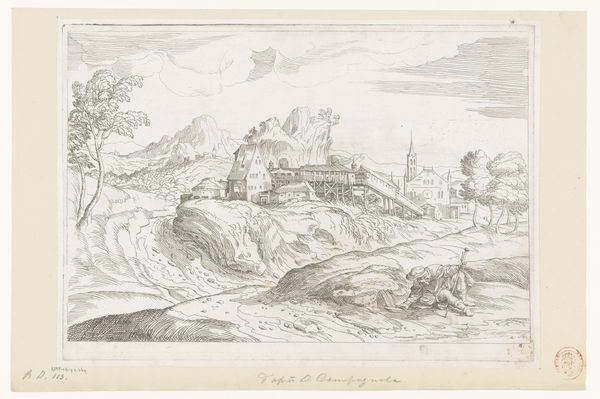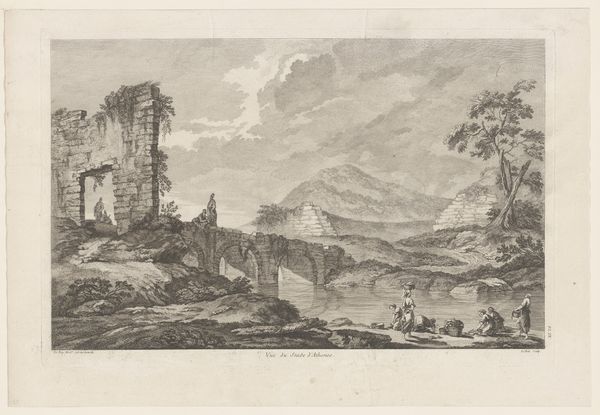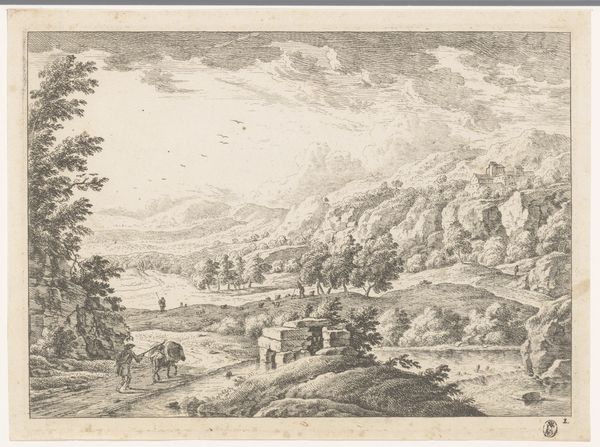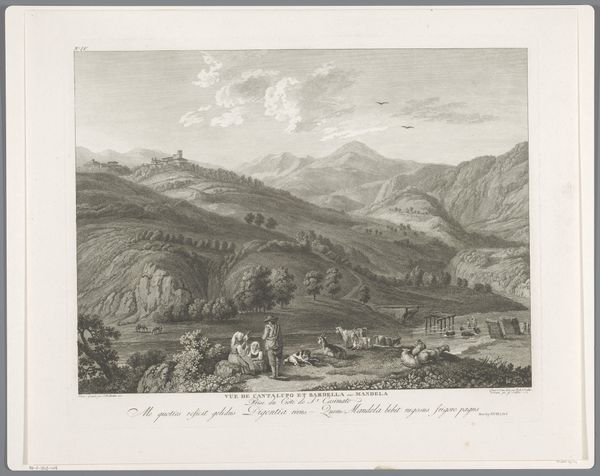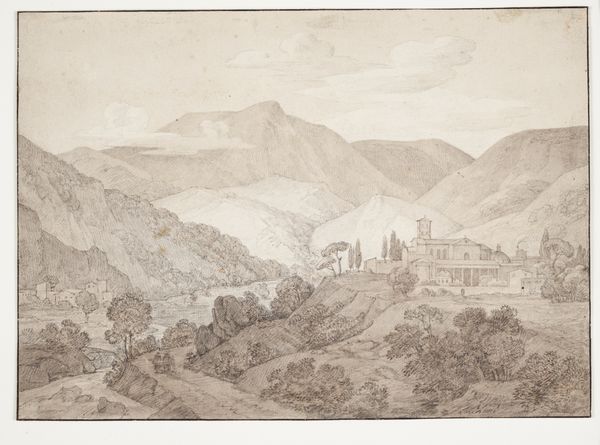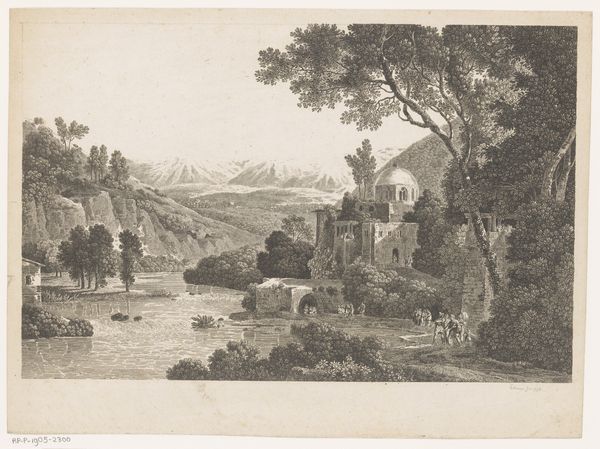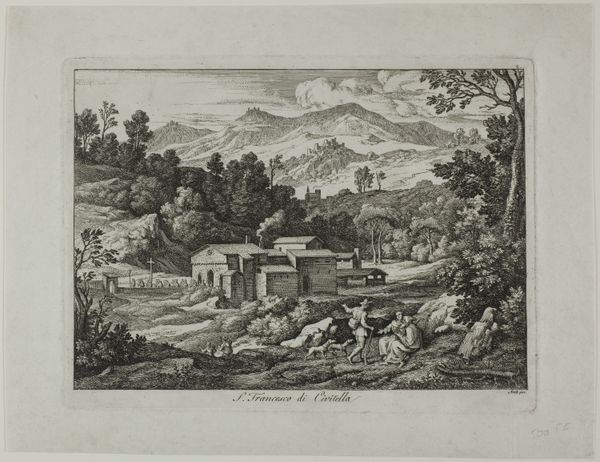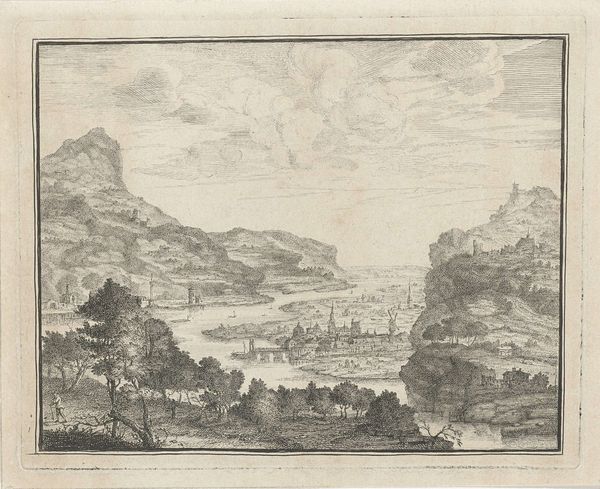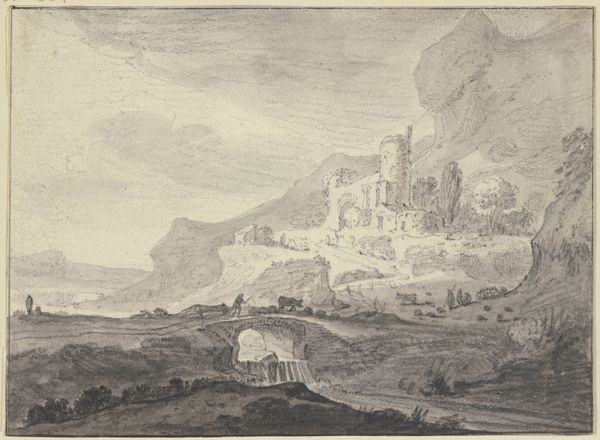
Dimensions: height 245 mm, width 322 mm
Copyright: Rijks Museum: Open Domain
Curator: Looking at this landscape, it feels like stepping back into a dream, a serene vista touched by both light and shadow. Editor: That's an interesting way to put it. For me, I immediately think of the sociopolitical climate that informs representations of nature. We're looking at "Gezicht op Schloss Bauzberg aan de Rijn" ("View of Schloss Bauzberg on the Rhine") by Christian Georg (I) Schütz, created in 1783, a time rife with social upheaval bubbling under the surface of these idealized landscapes. Curator: I see it. I love the contrast of the majestic Schloss Bauzberg castle sitting high upon a craggy hill—very evocative, as if daring you to contemplate eternity. The etching work has that crisp, delicate feel... but it's the grand romantic scale that always gets me. How do you read its landscape? Editor: The style definitely screams Romanticism, a period characterized by its emotional subjectivity. But the strategic depiction of the German landscape during the late 18th century—especially areas along vital waterways—acted, in many ways, as a geographical power play. To me, these idyllic renderings become documents claiming territory during political instability. Curator: Hmmm. Documents claiming territory, or celebrating what we risked losing to outside forces? I see it. All those delicate lines... so easily washed away, yes? Makes you feel so fragile, in a beautiful way, of course. The artist uses the river to unify the pictorial field and allow the viewer to visually navigate the print's different planes. Don’t you feel that the sublime natural background dwarfs those strolling figures? Editor: The relationship between nature and the figures are definitely interesting and symbolic. This technique invites contemplation about our existence. Think about it—landscape art becomes extremely popular during times when cultural identity is most threatened or in flux, reminding us that these depictions of nature don’t come from a neutral position. How did this artist represent communities affected by shifts in territorial control? Curator: Right—he’s hinting at this world that trembles between stability and potential unrest. Isn't that part of the magic? And by the looks of this romanticised German territory along the Rhine, perhaps it could speak even more directly about us in today’s socio-political environment. The castle at the hilltop as an immutable figure that witnesses the relentless changes of the river's stream down below… Editor: Well, I think we both find something worthwhile about the view of Schloss Bauzberg. It’s not just pretty scenery but also opens to deeper engagement with historical, political, and personal considerations. Curator: Yes—the echoes that still resonate so strongly centuries later! Thank you for this thoughtful contribution.
Comments
No comments
Be the first to comment and join the conversation on the ultimate creative platform.
